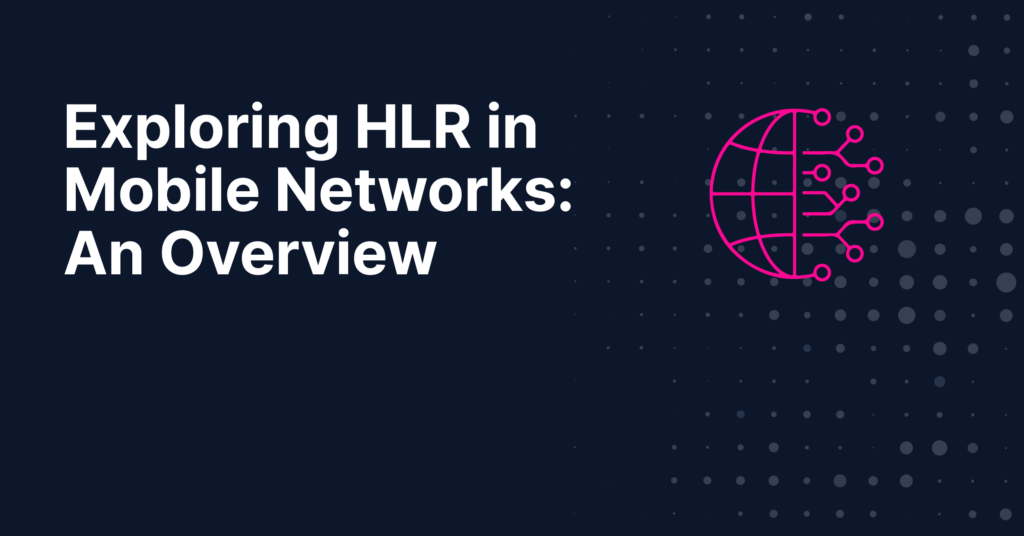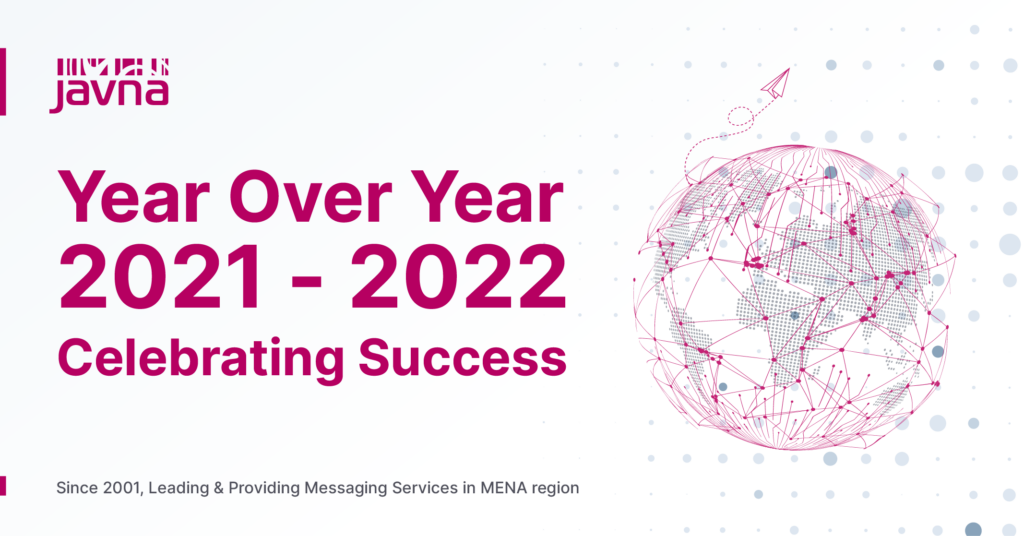HLR, or Home Location Register, stands as a pivotal component in the architecture of mobile networks, facilitating seamless communication and roaming capabilities across the globe. This article delves into the mechanics of HLR, illustrating its fundamental role in connecting calls, managing mobile services, and ensuring that users remain connected, irrespective of their geographical location. Through an exploration of HLR’s operations, you will gain comprehensive insights into how mobile networks achieve their extensive coverage and reliability, thereby enhancing the overall user experience in the mobile ecosystem.
1. What is HLR (Home Location Register)?
The Home Location Register (HLR) is a critical database in mobile telecommunications networks that stores detailed information about subscribers. It includes each subscriber’s service profile, status, and location information, serving as the core database for managing mobile services. HLR not only facilitates call routing and SMS delivery by maintaining up-to-date location data but also plays a key role in managing subscriptions and authenticating users. This ensures that mobile users can access their services seamlessly, regardless of their location, making the HLR an indispensable component of the global mobile communication infrastructure.
2. Importance in Mobile Networks
As the central repository of subscriber information, the HLR is pivotal in ensuring the efficient operation of mobile networks. It enables mobile operators to provide continuous service to users as they move across different areas, facilitating seamless roaming experiences. By managing subscriber data, including authentication and service entitlements, the HLR supports the delivery of personalized and secure mobile services. Its role in routing calls and messages to the correct location further underscores its critical function in maintaining the connectivity and reliability that users depend on in today’s mobile-centric world.
3. How HLR Works
The Home Location Register (HLR) operates as the backbone of mobile network infrastructure, playing a crucial role in managing and routing communications.
-
-
Basic Functionality:
-
The HLR stores detailed profiles of each mobile network’s subscribers, including their service subscriptions, billing details, and current location information. When a subscriber initiates a call or sends a message, the network queries the HLR to authenticate their identity and confirm service availability. This process ensures that only authorized users access the network’s services, safeguarding against unauthorized use and ensuring billing accuracy.
-
-
Role in Call Routing and Management:
-
In call routing and management, the HLR’s role is indispensable. It maintains the current location of subscribers by interfacing with the Mobile Switching Center (MSC) and Visitor Location Register (VLR) to track users as they move geographically. When an incoming call or message is directed to a subscriber, the HLR determines the most efficient route for delivery based on the user’s latest location data. This dynamic routing capability enables seamless communication, ensuring that calls and messages reach the intended recipient promptly, regardless of their physical location within the network’s coverage area.
By streamlining the authentication process and optimizing communication routing, the HLR enhances network efficiency, reduces latency, and provides a foundation for reliable mobile services.
4. HLR and Roaming Services
The Home Location Register (HLR) is instrumental in enabling seamless roaming services, allowing mobile users to access their network’s services when traveling outside their home network’s coverage area.
-
Enabling Seamless Roaming:
HLR facilitates roaming by storing information about a subscriber’s service rights and preferences, which are crucial when they connect to a visited network. It communicates with the visited network’s Visitor Location Register (VLR) to authenticate the subscriber and grant access to services based on their home network’s subscription. This process ensures that users experience uninterrupted service, whether they are making calls, sending messages, or using data services while roaming.
-
Interaction with Other Network Elements:
In addition to the VLR, the HLR interacts with several other key network elements to support roaming and overall network functionality. It communicates with the Authentication Center (AuC) for security purposes, ensuring that all roaming connections are securely authenticated. The HLR also interfaces with the Equipment Identity Register (EIR) to verify the status of mobile devices, further enhancing network security and integrity. Through these interactions, the HLR supports a robust and secure mobile ecosystem, enabling carriers to offer high-quality, continuous service to subscribers, even when they are roaming internationally.
5. HLR in Modern Mobile Networks
-
Evolution and Current Technologies:
Originally designed to support basic voice call services and SMS, the HLR’s role has expanded with the advent of 3G, 4G, and now 5G technologies. It now supports a wide array of services, including advanced data services, IoT connectivity, and personalized user experiences. The integration of HLR with next-generation network elements, such as the IMS (IP Multimedia Subsystem) for VoLTE (Voice over LTE) services, exemplifies its continuous evolution.
Current HLR technologies are designed for high scalability and reliability to manage the growing number of subscribers and their demand for seamless connectivity across various access technologies. Modern HLR solutions leverage cloud-based architectures and virtualization to enhance flexibility, allowing mobile operators to efficiently scale their services and introduce new features without substantial infrastructure overhauls.
This ongoing evolution of the HLR underscores its foundational role in mobile networks, ensuring that as telecommunication technologies advance, the HLR remains a critical component in delivering the connectivity and services that users expect in today’s digital world.
6. Impact on User Experience and Network Efficiency
The Home Location Register (HLR) significantly impacts both user experience and network efficiency within mobile networks. By centralizing subscriber information, HLR ensures seamless service delivery, thereby enhancing the overall user experience. Here’s a breakdown of its impact:
-
User Experience
- Seamless Connectivity: HLR enables users to maintain constant connectivity, regardless of their geographical location. This is particularly evident in the facilitation of roaming services, allowing users to seamlessly access services when traveling.
- Personalized Services: By storing detailed subscriber profiles, HLR allows for the delivery of personalized services tailored to individual user preferences and behaviors, improving customer satisfaction.
- Quick Service Restoration: In case of network or service issues, HLR helps in quickly restoring services to affected users by efficiently managing their subscription information.
-
Network Efficiency
- Optimized Resource Allocation: HLR plays a crucial role in the efficient allocation of network resources. By keeping track of active and inactive subscribers, it ensures that network resources are optimally utilized.
- Enhanced Security Measures: The centralization of subscriber information in the HLR aids in implementing security protocols more effectively, reducing the risk of fraud and unauthorized access.
- Improved Call Routing: HLR’s accurate and up-to-date information on subscriber location and service status enables more efficient call routing, reducing the likelihood of dropped calls and enhancing the quality of service.
7. Conclusion
In conclusion, the Home Location Register (HLR) is a pivotal element in mobile networks, underpinning critical operations from call routing to seamless roaming services. Its role is central to not only maintaining efficient network operations but also enhancing user experiences through reliable connectivity and personalized services. As mobile networks evolve, the HLR adapts, ensuring that it continues to meet the demands of modern telecommunications. Understanding its functionality and impact is essential for anyone looking to grasp the intricacies of mobile network operations and the future of digital communication.
8. FAQs about Home Location Register (HLR)
-
What is the Home Location Register HLR API?
The Home Location Register (HLR) API is a digital tool that enables access to information stored in the HLR of mobile networks. It allows for querying mobile phone statuses, such as verifying the current network a mobile number is registered with, its roaming status, and other telecommunication details. This API is crucial for businesses and services that require real-time data on mobile numbers for authentication, routing messages, or ensuring accurate and efficient communication.
-
What is the HLR profile used for?
The HLR (Home Location Register) profile is utilized to store essential information about mobile phone users within a network, including their subscription details, service permissions, and current status. It plays a pivotal role in managing calls, SMS, and data services, ensuring users can connect seamlessly and are provided with the correct services according to their subscription. The HLR profile is crucial for enabling efficient network management, authentication processes, and roaming capabilities across mobile networks.
-
What information is stored in the HLR?
The Home Location Register (HLR) stores comprehensive information about mobile network subscribers. This includes identification numbers (like IMSI and MSISDN), service profiles detailing subscriber services and features, authentication data for secure access, and the current location to manage calls and messages efficiently. The HLR also tracks roaming status and can store billing details, making it a central repository for managing and delivering mobile services effectively.
-
What is the difference between HLR and VLR?
The Home Location Register (HLR) is a central database containing details about mobile subscribers, including their service profiles and location information. In contrast, the Visitor Location Register (VLR) temporarily stores information about subscribers currently within its service area, primarily to manage incoming calls and messages. While the HLR serves as a permanent repository for subscriber data, the VLR facilitates local network services and communication for roaming users by querying the HLR for necessary information.



